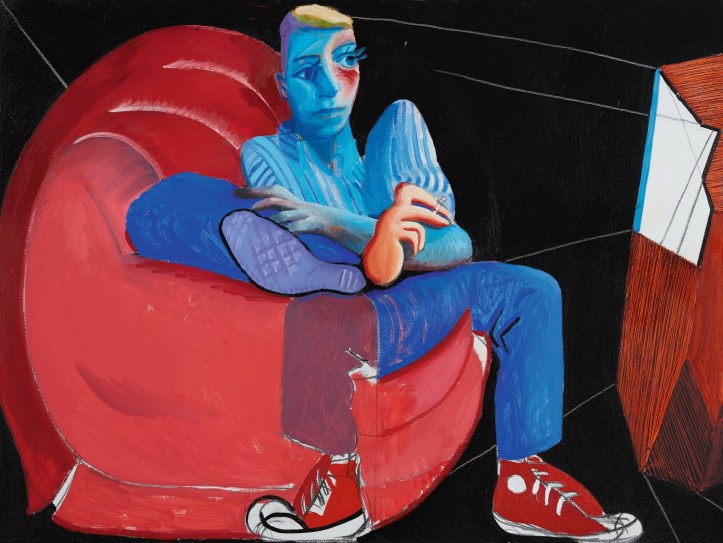 David Hockney – Ian Watching Television [1987] Gandalf’s Gallery. Flickr.
David Hockney – Ian Watching Television [1987] Gandalf’s Gallery. Flickr.
Do you feel stuck in a rut and held back in your life? At work? At home? Or both…
What does feeling stuck even mean? There are different meanings for different people, depending on their life-situation and the way they see the world. Generally, people report wanting to move on, but they feel they cannot; they are depressed, powerless, anxious, frustrated, stagnant, trapped. They feel as if their life is on pause.
How can we deal with such feelings of stuck-ness?
- Sharing feelings
It is important, especially when we feel stuck and frustrated, to be able to share our feelings with another, with someone who is trustworthy, empathic and attentive to our needs. The experience can be healing, as we may need others to hear our pain and help us through it.
“It needs strength to stay silent, but it needs courage to confide in somebody.”
Namrata Kumari
The rewards of risking sharing one’s own issues can be many; feeling heard, believed and validated can be a releasing and relieving experience.
Another person is likely to see our situation differently, offering an alternative viewpoint, and pointing out, perhaps, the obvious aspects of our situation that we cannot see. Such ways of being may be an unconscious repeat of past behaviour or experience.

For example, the picture of the elephant, above, shows the huge animal lightly tethered to a small peg with a thin, loose rope. What the animal does not seem to be aware of is that they could easily pull out that peg; but seemingly they are standing still, as if tied up tightly to a solid post.
We do not know about the elephant’s past, but we might surmise that this animal is in some sort of internal prison. The elephant needs help to recognise this, otherwise they will be stuck there forever, imagining they are trapped.
If the elephant could think (and who knows, they might), then they could be helped, by a good friend, to see that there are some false premises and beliefs at work here.
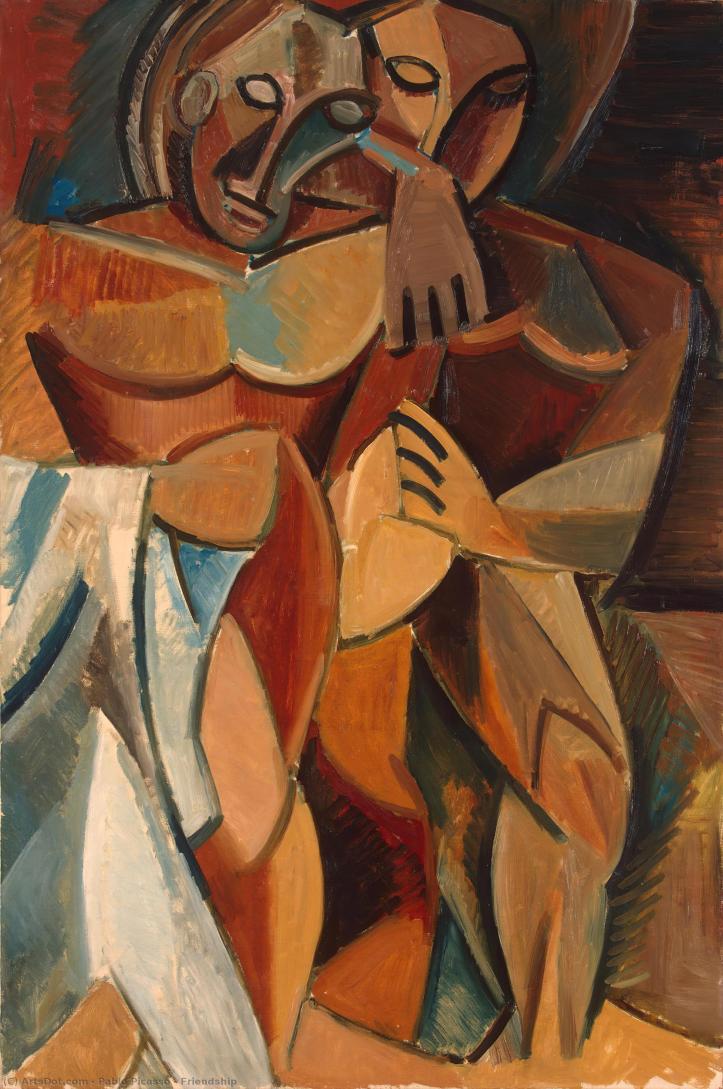 Friendship – Pablo Picasso. 1908. Wikioo
Friendship – Pablo Picasso. 1908. Wikioo
“I am a forest, and a night of dark trees: but he who is not afraid of my darkness, will find banks full of roses under my cypresses.”
Friedrich Nietzsche
Uncovering their thought processes could result in the elephant realising that their ways of thinking were faulty: “I was really stuck last time I was tied to a post, so I must be this time.”
This is at the core of the animal’s assumptions and distorted thinking. In addition, thinking in this way may mean that they do not need to take any responsibility for the stuck situation; they can blame others.
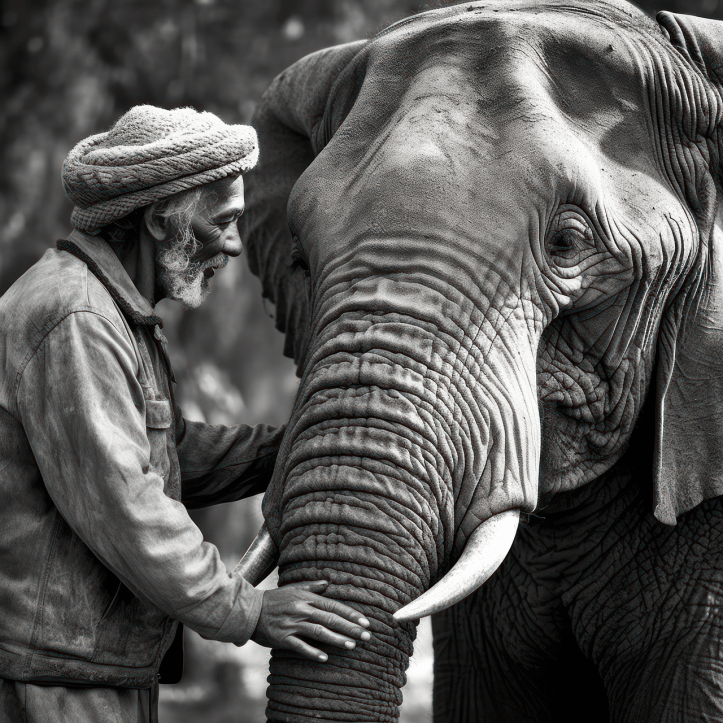
It may even be that there is some feeling of safety in being tethered, so accustomed is the elephant to trauma.
This ‘elephant story,’ of course, symbolically refers to human beings, in that, often, people remain in a familiarly unpleasant situation, because they are used to this. They may be stuck in a rut, but at least they are, apparently, safe from danger.
This kind of reaction could also be seen in people during the Holocaust, as was told to me by a survivor, when people were hiding from the Nazis in the sewers. Even when assured it was safe to emerge, even when they came out, some, quite understandably, rushed back in, preferring that dank, underground, rat-infested hiding place to the risk of freedom… and perhaps capture.
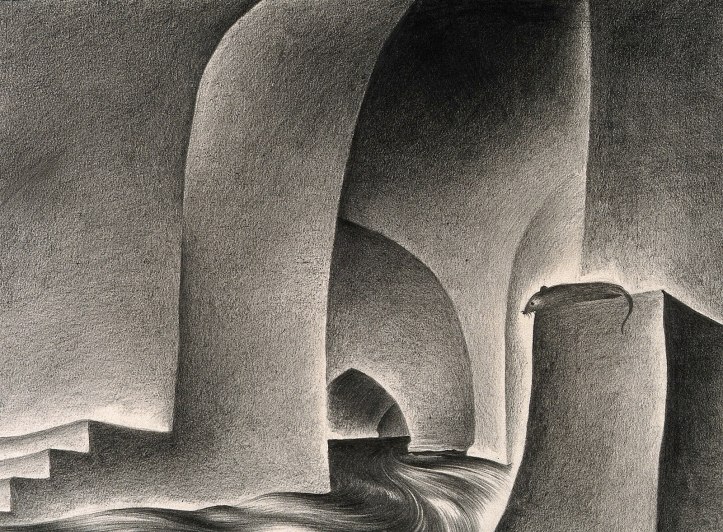 Rats living in the sewers. Drawing by A.L. Tarter, 1940’s. Wikimedia Commons.
Rats living in the sewers. Drawing by A.L. Tarter, 1940’s. Wikimedia Commons.
- Waiting and not-knowing
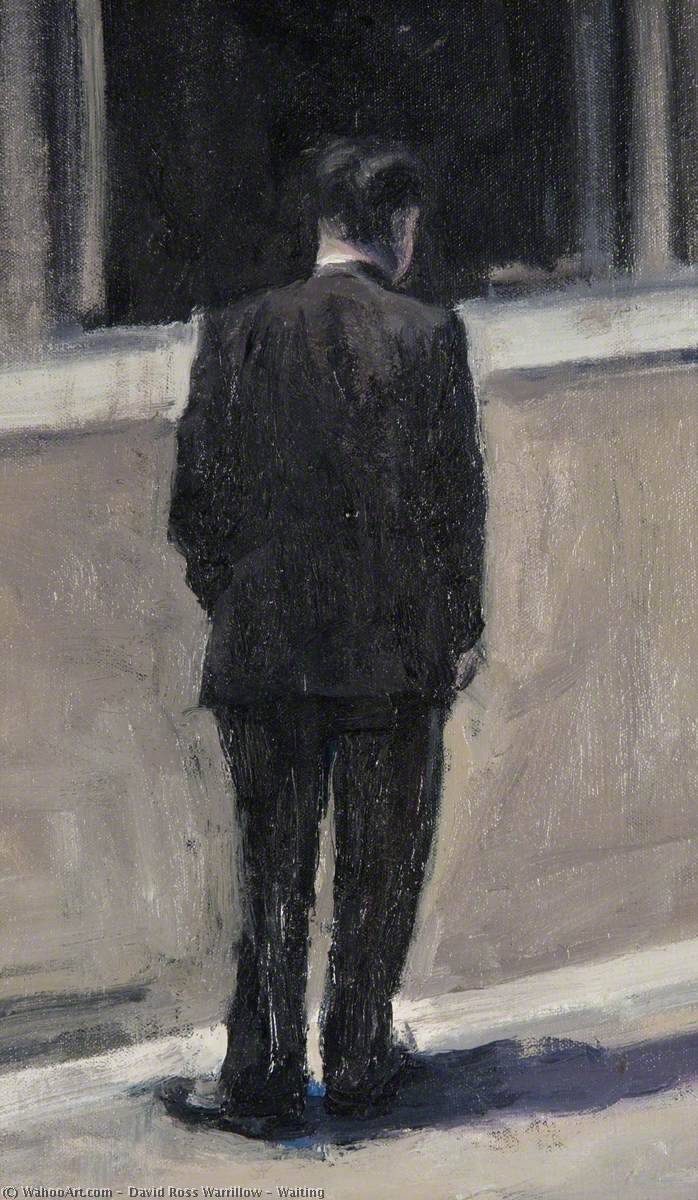
Waiting – David Ross Warrillow. 2004. Wikioo
“Sometimes all you can do is wait.
Sometimes you have to
just
keep your distance,
let other people do what they have to do,
figure things out for themselves.
Sometimes all you can do is
let things play out
the way they need to.”Shellen Lubin
Learning to wait is also crucial if we are to find a way out of a stuck situation. It is important to have patience and to stop pressurising the self.
“Everything comes to you at the right time. Be patient and trust the process.”
Unknown.
Whilst time does not always heal wounds or make everything right, we can still learn much from the Buddhist views of time, truly discovering the importance of being in the present moment and being thankful for the reality of impermanence: “This too shall pass.”
Trusting the process takes hope and some realistic optimism and understanding that nothing lasts forever, difficult times will pass and things will become easier…eventually we will move on in life.
Of course, this does not always happen, but generally, if we can wait, persevere and have patience, most clouds do have silver linings!
Life itself is a process, a different one for each of us and we need to develop some kind of trust, embracing what will unfold in time that is unknown now. Seeking instant solutions for stuck feelings is ‘pushing the river.’
Whatever one’s beliefs may be, it is important to have the courage and resilience to wait, to stay with uncertainty, to go with the flow. The process of change can be long and gradual, sometimes hardly discernible.
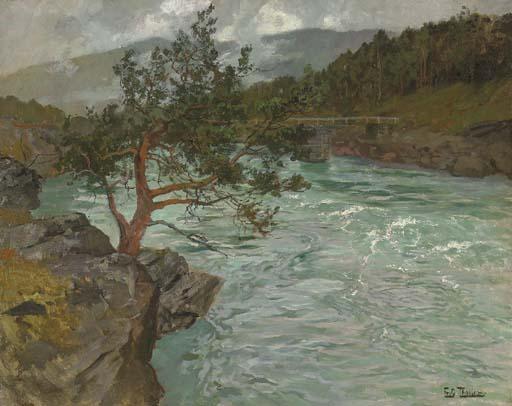
The River Otta, Norway – (Frits Thaulow)Wikioo
“Don’t push the river. It flows by itself.”
Barry Stevens.
Allowing the river to flow in its own way, in it own time, means that we are trusting the process of life. We are not seeking to control what is not controllable, but accepting that we may have to wait, without answers, staying stuck, not-knowing how to get out of this uncomfortable, static position.
In this world of high speed information, cutting edge technologies and quick-fire solutions, not-knowing might appear highly undesirable. The urge to know, and to find out quickly, is regarded as ‘cool’. Expectations are that we simply press buttons and receive answers.
In actuality, developing a capacity not to know can be highly creative and freeing. Instead of rushing to find solutions, what if we were to allow some degree of uncertainty, wondering, curiosity?
Could we take the risk of facing the unknown and give ourselves, and others, some space and time to wait and see what emerges? This is a state of relaxed acceptance of uncertainty, something resembling Keats’‘negative capability,’ when one is ‘without any irritable reaching after fact and reason.’
This ‘not-knowing’ is akin to a mental slowing-down, curbing the tendency to jump to conclusions without thinking. It avoids the distortions that come with quick certainties.
 David Michael Bowers – Life Lines, 2022. Gandalf’s Gallery,Flickr.
David Michael Bowers – Life Lines, 2022. Gandalf’s Gallery,Flickr.
“What does ‘stuck’ mean?” “It means I should make some big decision, I should do some enormous thing. And I can’t do anything. I can’t stand my life, and I can’t change it.” “Maybe it’s not an enormous thing,” he says. “Maybe you have to do one small thing and then another small thing.”
A.M. Homes, Music for Torching
Beginning to ‘unstick’ oneself is not about making grand gestures, taking great leaps, or jump-starting our life. It is a slow and arduous journey into ourselves to seek understanding and insight. It requires staying-power and resilience.
In time, we might come to understand that feeling stuck can be a turning point:
“Never give up, for that is just the place and time that the tide will turn.”
Harriet Beecher Stowe
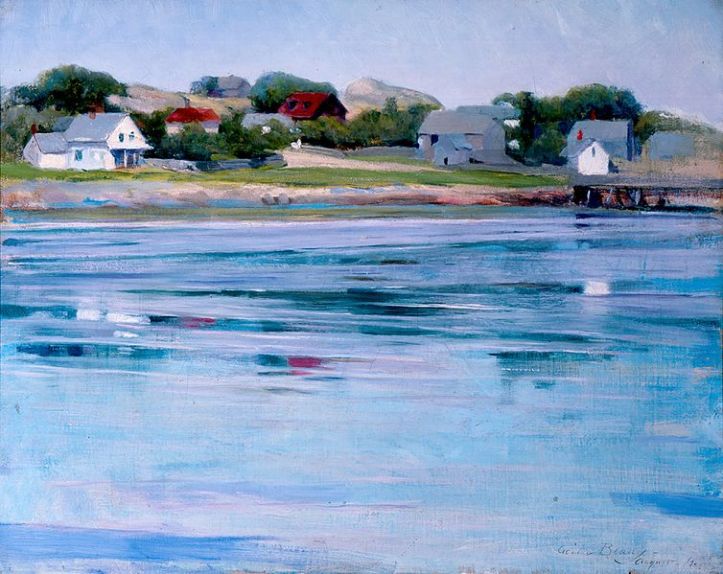 Half-Tide, Annisquam River by Cecilia Beaux. c. 1905. Wikimedia Commons
Half-Tide, Annisquam River by Cecilia Beaux. c. 1905. Wikimedia Commons
Staying in the dark, with the stuck feelings, will produce rewards. Difficult though it may be, not actively trying to move on, but remaining still and exploring thoughts and feelings, may be helpful.
Stopping activity for a while allows us an opportunity to open the mind, allowing confusion and doubts to simply be there, free of conceptual constraints. Sometimes, activity can be a defence against having to think and feel, keeping us more stuck than ever.
Rushing around does not give us space or time to look inside ourselves. Often, people might go to therapy to help with this.
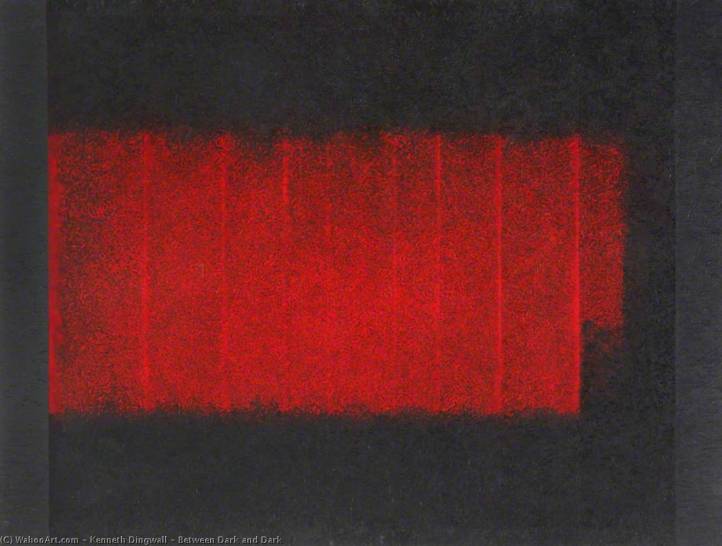 Between Dark and Dark – Kenneth Dingwall. Wikioo
Between Dark and Dark – Kenneth Dingwall. Wikioo
“Sometimes someone isn’t ready to see the bright side. Sometimes they need to sit with the shadow first. So be a friend and sit with them. Make the darkness beautiful.”
Victoria Erickson
- Staying with the pain in therapy
In therapy, there will be no rush, no pressure, just a quiet and strong presence. An empathic therapist can stay with the client’s pain without trying too hard to know how to help. What does this mean?
Many times, therapists do not know the best way to help clients. The client, at some level, knows what they need and the therapist knows that they must both wait until the process of therapy facilitates the emergence of relevant material to work on.
These periods of ‘not-knowing’ are immensely valuable; within the containing and safe atmosphere of the therapy room, the client will learn that it is more than acceptable not to know, to stay with the stuck-ness… it is actually an important part of the therapy process.
“…acceptance of not-knowing produces tremendous relief.”
Winnicott.
In taking one’s pain to a therapist, the hope is that we will be heard, valued and patiently enabled to work through our stuck feelings.
“If you’re in a dark place, you’re there for a reason. And the only way to get through to those kids or to other people going through the same thing is really to meet them in that dark place and then slowly bring them to the light.”
Bebe Rexha
A therapist who reacts rather than responds, who rushes into doing rather than being with the patient, will not be staying with the pain of the other.
“The alternative to being is reacting, and reacting interrupts being and annihilates.”
Winnicott.
Not-knowing is a kind of waiting, purposefully not pushing the self.
“Emotional pain cannot kill you, but running from it can. Allow. Embrace. Let yourself feel. Let yourself heal.”
Vironika Tugaleva
‘Embracing’ pain might sound strange; what it means is, to my mind, a staying with, without judgement or guilt, a listening, to what the pain is telling you, and a kind of faith that the pain, in this case, the stuck-ness, is there as a learning experience, to be valued, expressed, recognised, accepted…and embraced.
We need to assure ourselves that it is important to hear our own feelings, and give ourselves permission to feel immobility and stuck-ness. If we do not acknowledge our real feelings, they will linger and trouble us inside.
“The pain is there; when you close one door on it, it knocks to come in somewhere else…”
Irvin D. Yalom
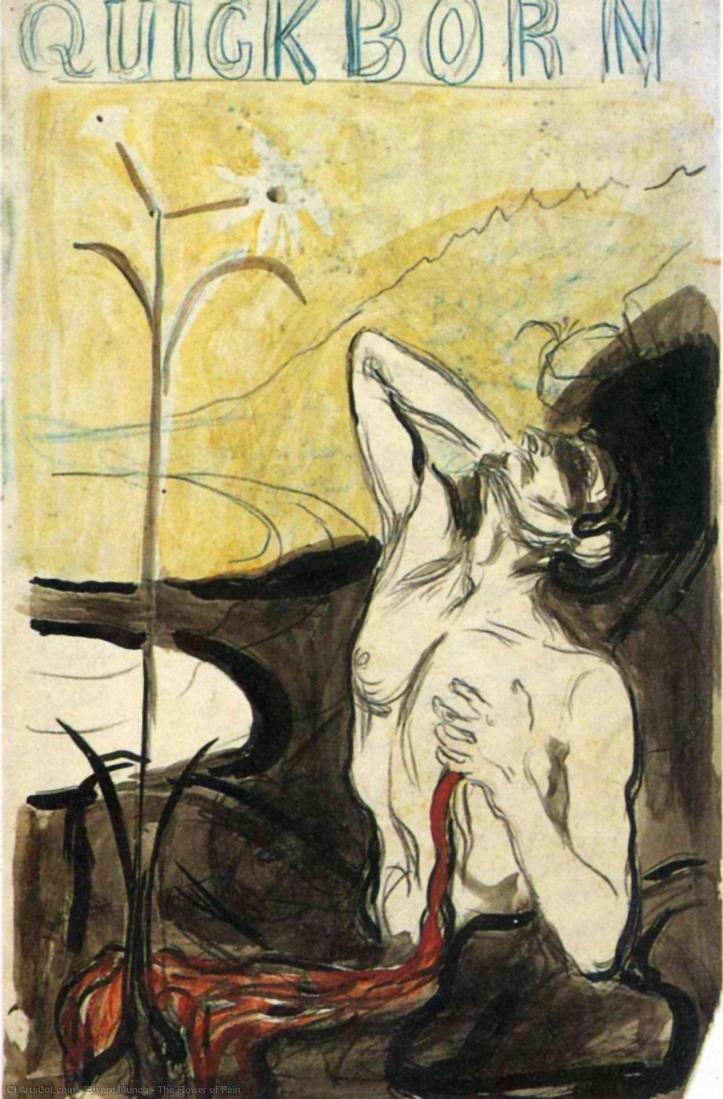 The Flower of Pain – 1897. Edvard Munch. Wikioo
The Flower of Pain – 1897. Edvard Munch. Wikioo
“If you can sit with your pain, listen to your pain and respect your pain — in time you will move through your pain.”
Bryant McGill
- Fearing change
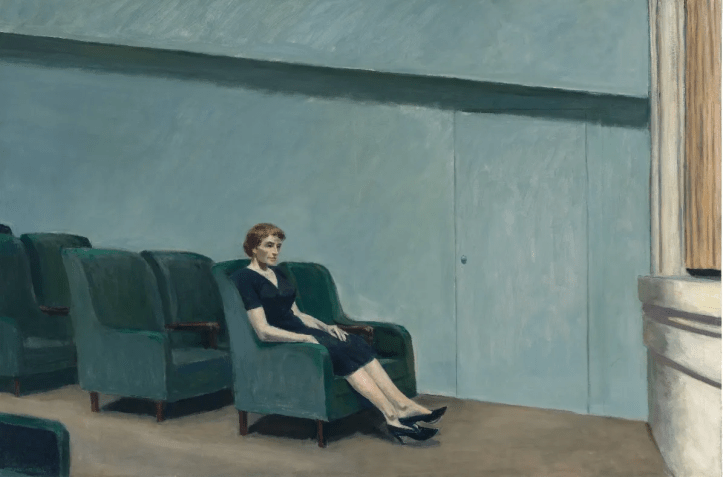 Edward Hopper – Intermission [1963] Gandalf’s Gallery. Flickr.
Edward Hopper – Intermission [1963] Gandalf’s Gallery. Flickr.
Stuck feelings can represent a fear of change, of taking risks, of encountering the new and the different. Sticking to the old ways is much more reliable, safer.
Safer it may be, but it is not really living; it is existing in the prison of the self. Exploring these fears, and learning to take some risks, is a way to help ‘unstick’ those who feel stuck in this way.

Imprisoned Spring – Arthur Hacker. 1911. Wikioo.
“You have to take risks. We will only understand the miracle of life fully when we allow the unexpected to happen.”
Paulo Coelho
Without risks, life would be dull and boring. Taking calculated risks, coming to terms with the uncertainty of life, weighing up the pros and cons, making mistakes and learning from them, all are necessary if we are to ‘seize the day’ and release ourselves.
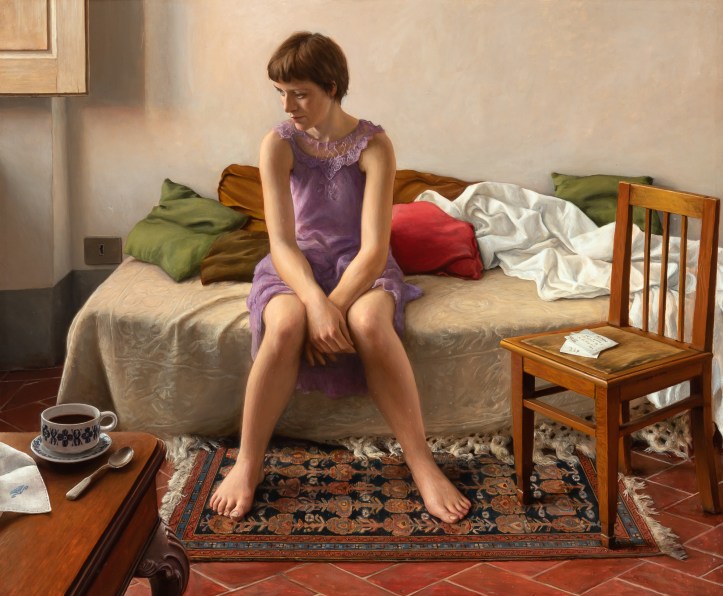 Richard Maury – Untitled (Woman Sitting on Bed) [1978] Gandalf’s Gallery. Flickr.
Richard Maury – Untitled (Woman Sitting on Bed) [1978] Gandalf’s Gallery. Flickr.
“I’m afraid of committing myself,” she thought to herself. She wanted to follow all possible paths and so ended up following none.”
Paulo Coelho
Choosing a path in life takes courage; it is, inevitably, a risk. However, we will never know which direction in life is the ‘right’ one for us, unless we try it, and make the brave decision to move into a new area.
High expectations and negative comparisons with others will only lead to more feelings of being stuck… and considerable disappointment.
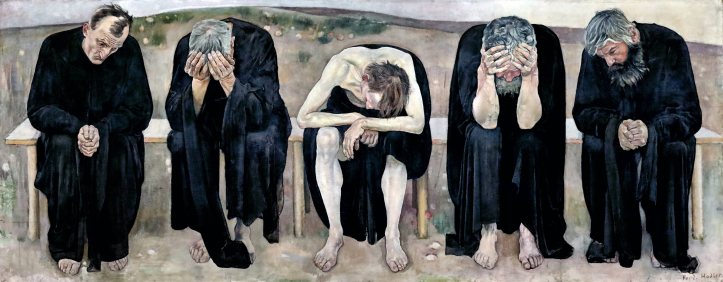
“Expectation has brought me disappointment. Disappointment has brought me wisdom. Acceptance, gratitude and appreciation have brought me joy and fulfilment.”
Rasheed Ogunlaru
- Feeling stuck in the past
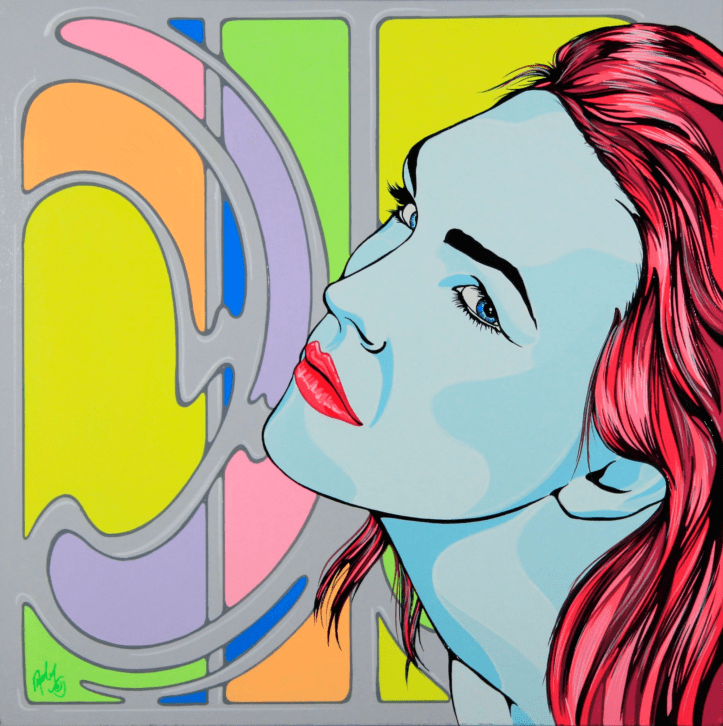 Andy – Remembering [2015] Gandalf’s Gallery. Flickr
Andy – Remembering [2015] Gandalf’s Gallery. Flickr
Feeling stuck in the past, being unable to resolve past trauma, will hold a person back, so that a part of them will remain fixed at an earlier stage of life and be unable to move forward into the future.
Experiences in the present will constantly produce emotional triggers and revivify past pain. Until such experiences can be recognised and clearly located in the past, instead of haunting the present, there will be a feeling of being trapped.
‘The catastrophe you fear will happen has already happened.’
Donald Winnicott
Winnicott is referring to the fact that those who have had difficult and frightening experiences in the past may feel afraid, confused and chaotic in the present, but in reality, these current fears are a memory; they are, in fact, history repeating itself inside our minds.
It is also important to remember, that during times of feelings stuck in the past, we survived and we got through it, so we can do it again, painful though it may be.
“If you want to choose the pleasure of growth, prepare yourself for some pain.”
In return for facing such darkness and pain, we will experience a feeling of greater freedom, a sense of moving forward, and a release from the internal confinement that kept us so distressingly stuck.
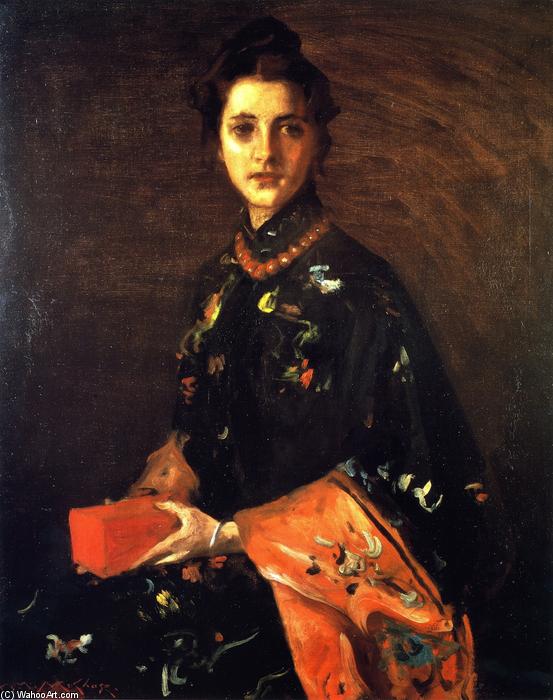
The Red Box – William Merritt Chase. 1901. Wikioo
“Someone I loved once gave me a box full of darkness. It took me years to understand that this too, was a gift.”
Mary Oliver
If you have liked this post, I would much appreciate you showing support to me by becoming a follower of waysofthinking.co.uk
Thank you.
© Linda Berman.

As always, you have hit the nail on the head for me.
LikeLiked by 1 person
Thank you for your comment- I’m so glad it hit the spot! 🤗
LikeLike